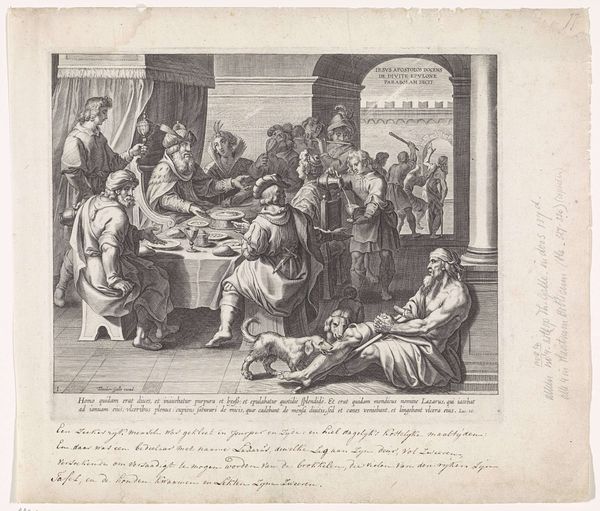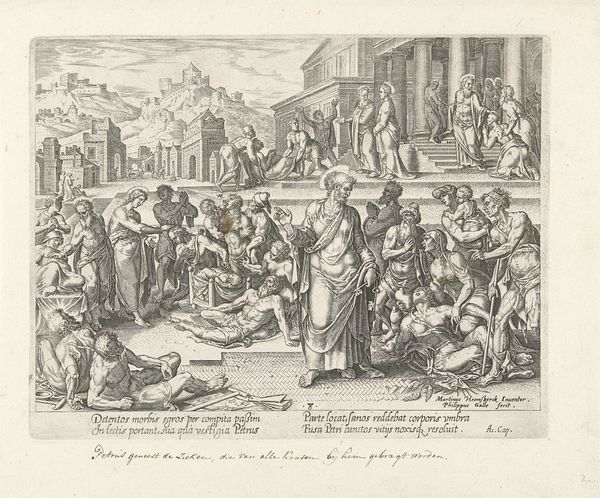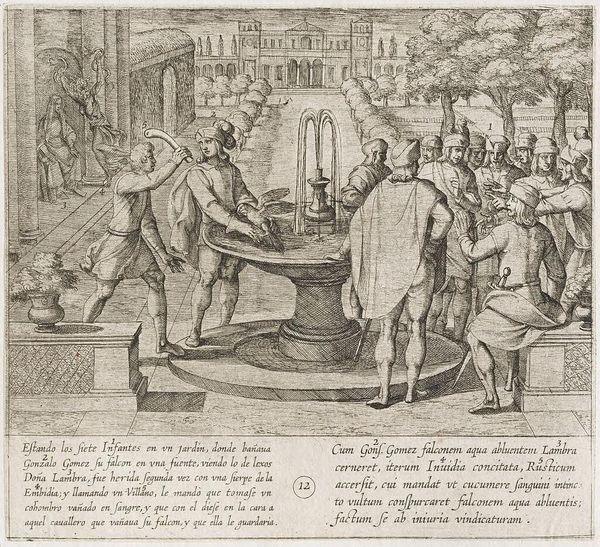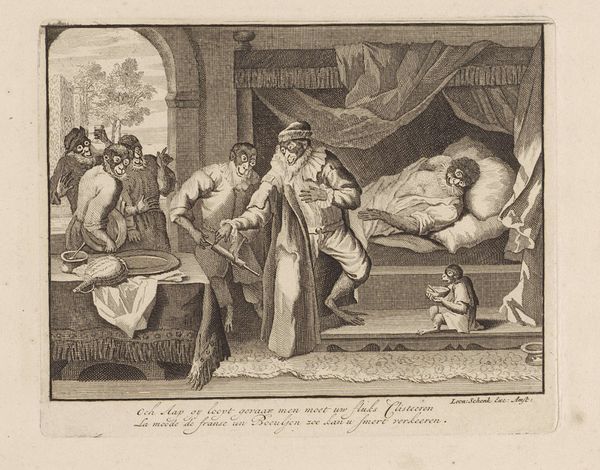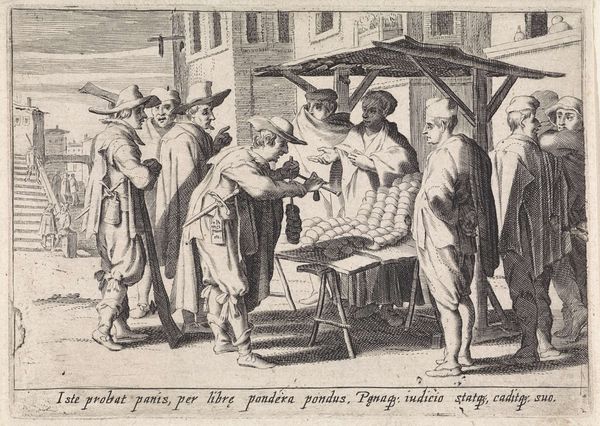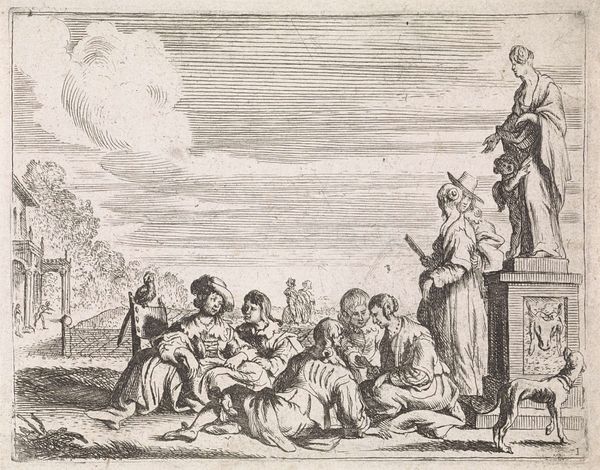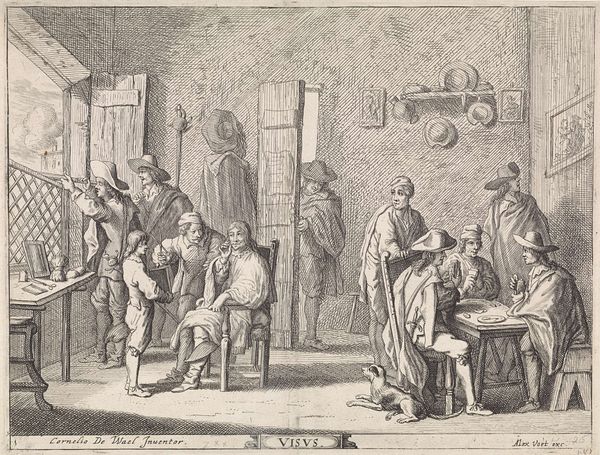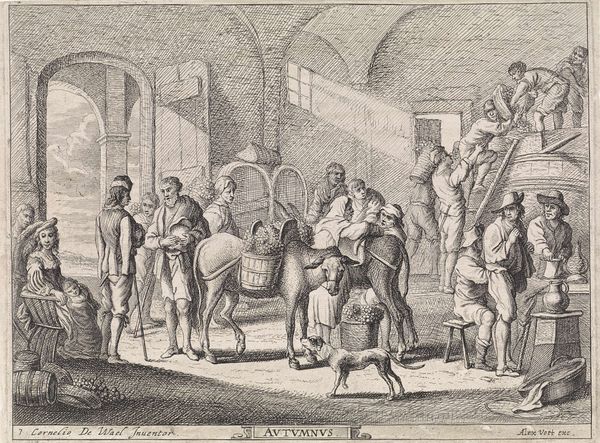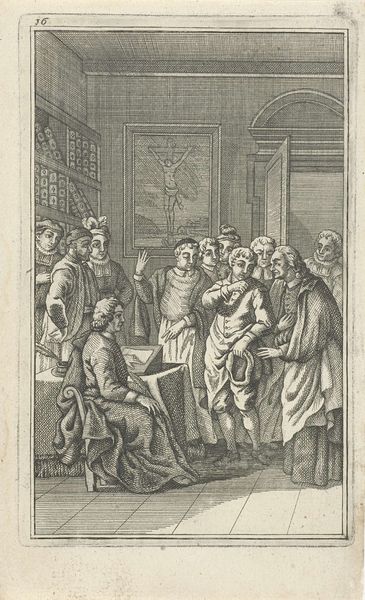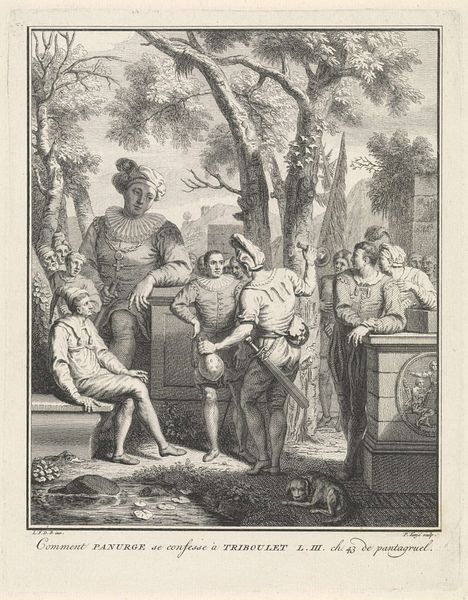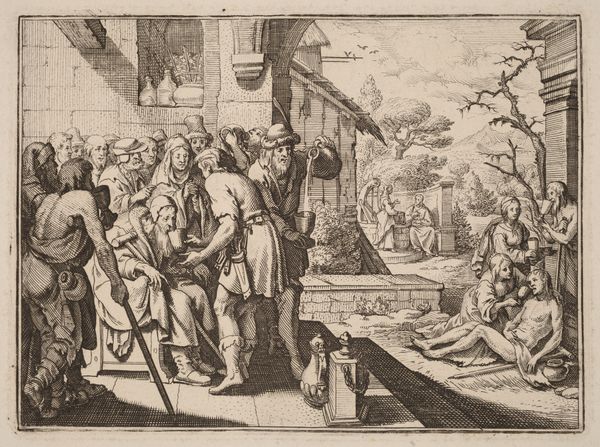
print, engraving
#
baroque
# print
#
landscape
#
figuration
#
genre-painting
#
history-painting
#
engraving
Dimensions: height 227 mm, width 303 mm
Copyright: Rijks Museum: Open Domain
Curator: This engraving, titled "Zomer," roughly translates to Summer. The work is attributed to Melchior Hamers from somewhere between 1628 and 1689. It seems a genre scene, with a distinct baroque landscape and history-painting flair. Editor: The printwork has a definite handmade feel to it, with clear marks indicating an involved and crafted process. It conveys a lively, though slightly rigid, feeling of outdoor social activity and gathering. Curator: Precisely. The composition seems to represent the season through leisure and abundance, likely portraying a bourgeois social event set amidst classical statuary, formal gardens, and perhaps even hinting at colonial trade via imported goods, considering Hamers was active during a peak period of Dutch maritime power. Editor: It's interesting to think about the social function of such an image. We see people at leisure, with a variety of figures enjoying food and drink served around a central table. Engravings were important means of distributing ideas. The way the social activity is framed in this idealized natural space reinforces elite ideas about labor and social standing. I find it very compelling from a consumption perspective, but also in regard to the work that went into such piece-making in that period. Curator: I concur. Note also how Hamers uses the classical statuary and architecture as backdrop; it projects a visual link to a venerable past legitimizing, or perhaps even masking, contemporary social and economic disparities. Editor: The contrast between the finely-rendered human figures and the sketchier background vegetation really highlights a structured tension here, reinforcing ideas of power over nature, literally crafted into the print via labor and time. The hand producing the scene had specific social meaning within the economy. Curator: Looking closely reveals that the garden and its statuary become performative spaces reflecting and cementing the social status of the gathering's participants within a complex interplay of commerce, leisure and political influence of the era. The image suggests not simply summer abundance, but more critically an artifice propping a stratified society. Editor: It underscores, for me, how closely art and social practices intertwined in 17th century society; a system preserved through labor and the image as commodity. Curator: Absolutely. It provokes contemplation beyond pure aestheticism into the structures sustaining it. Editor: It makes me think about how the consumption of images and social activities are inextricably tied, as captured here, not unlike contemporary visual culture.
Comments
No comments
Be the first to comment and join the conversation on the ultimate creative platform.
